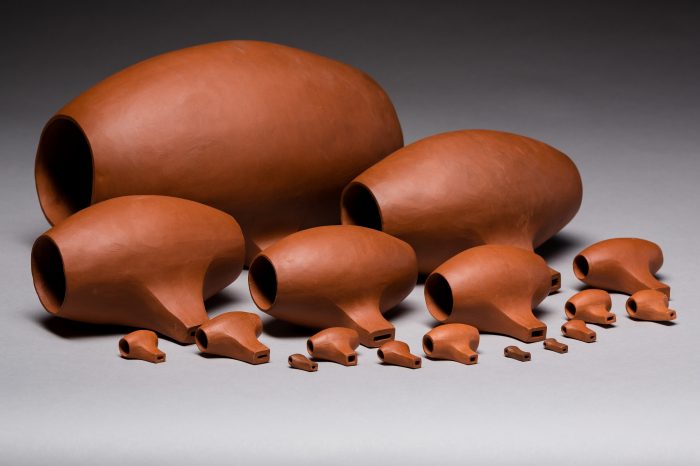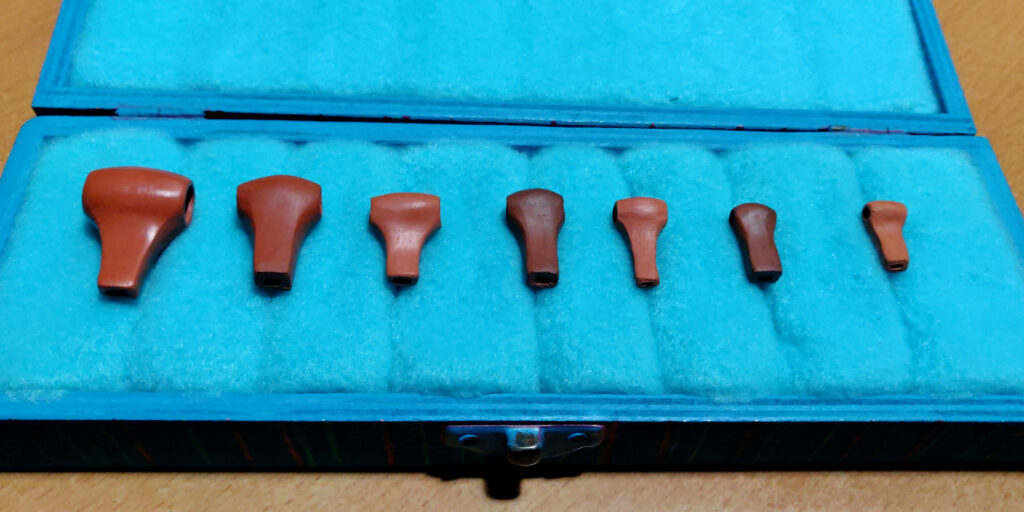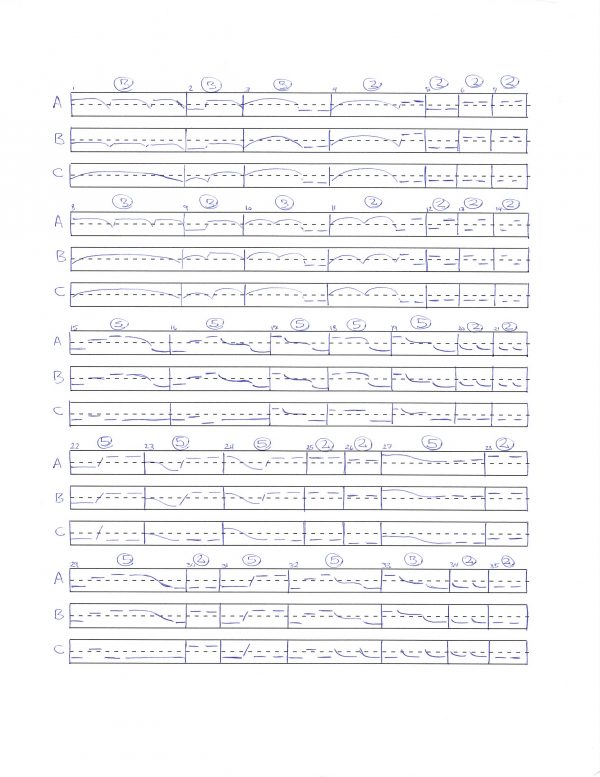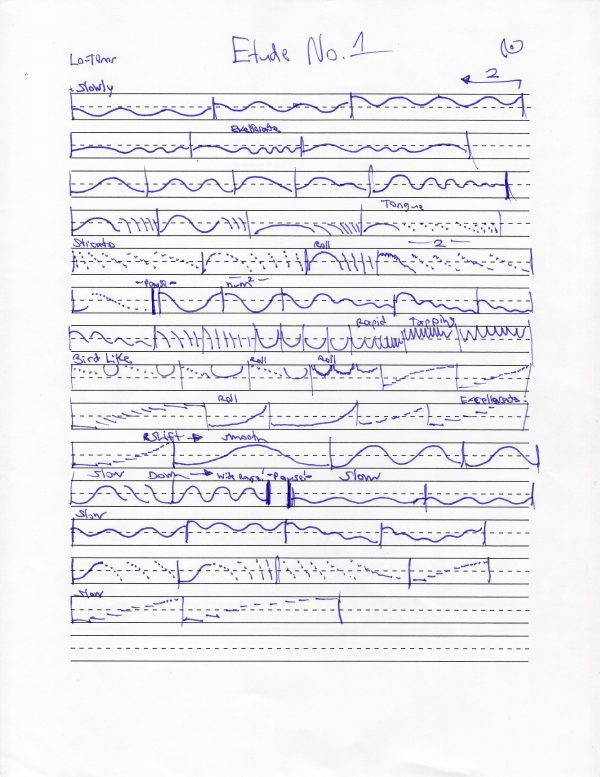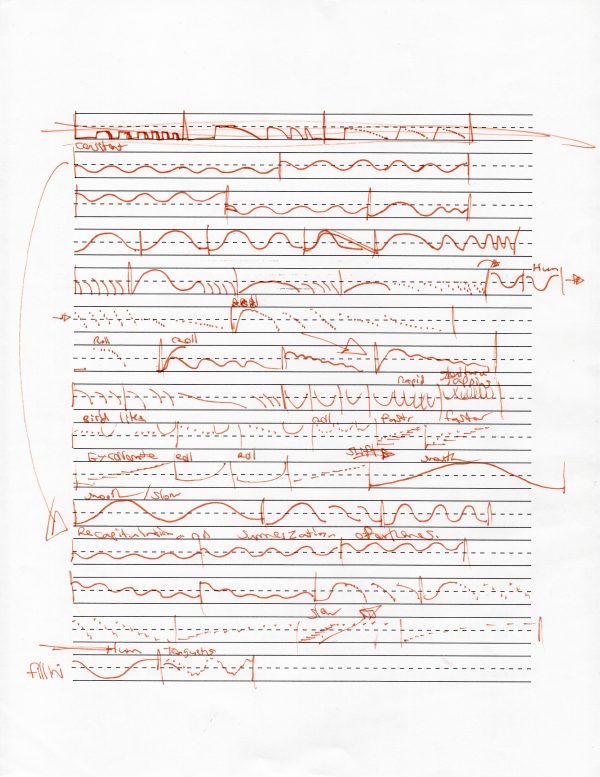PITCH FLUID OCARINA ENSEMBLE:
STOLEN VOICE
Stolen Voice is a set of 35+ ocarinas that are able to be played in a pitch fluid way. These ceramic instruments can play a pitch range from B1 up to C#10, ranging from 36 inches long to under 1 CM in size. These instruments have been used for performances ranging from standard tonal music, microtonal scores, text scores, and fluxus performance art. I compose unique fluxus inspired works for this ensemble that make strong references to the sounds of nature. These sounds can range from Whale calls, Bird calls, Cicadas, Crickets, and even the buzz of Mosquitos. More on the research and development of these instruments can be read HERE.
AUDIO & VIDEO
Here is a performance of Birds|Insects by the
Valley Chamber Ensembles “LightenUp” Ensemble.
Here is a demonstration of the upper pitch range of the ensemble. These ocarinas are some of the smallest ever made. Since making this video I have since expanded the upper range of the ensemble by nearly an octave, allowing the highest members of the ensemble to be able to exceed the human hearing range.
This small carrying case contains the smallest members of the set. These instruments sound much like the high pitched hum of a tube television or the buzz of a mosquito. The smallest members are very difficult to play, and require a high degree of breath control to maintain a sustained tone.
These following SoundCloud audio samples are various experiments I did early in the development of these instruments. They are some of the first sounds ever made with this set of instruments. I have long been interested in the way that coherency is made in music. How do interwoven layers of moving sound mesh together to form music that is coherent? In these experiments I have been actively interested in challenging my senses in the ways this interweaving should sound and function.
The majority of scores written for Stolen Voice are not standard tonal music and are not written on a typical music ledger. The scores that I have written for the ensemble are written as text scores or on a simplified ledger that is based off the ergonomics of the instruments. On these scores the bottom line of the staff is for when the two holes of the ocarinas are fully closed, and the top line is when the two holes are fully open. The center line is for when the holes are half open. I prefer the playing technique of opening both holes with both hands at the same time, instead of opening one hole after another.
SCORES
Birds
Requirements:
For microtonal ocarina ensemble.
For at least 8 performers dispersed throughout a large open space at dusk for at least 10 minutes.
Instructions for each performer:
Think of the vocabulary of songbirds.
Think of birdlike chirps and patterns.
Move around the performance space, interacting with others.
You should focus on one-on-one communication.
Play much like you are in conversation.
The sounds you produce should be more melodic then rhythmic.
Think about the sounds and patterns available on your specific instrument.
Think about the way your body interacts with the instrument.
Think about how you interact with others and how your new voice, through the instrument, affects the way you communicate.
Instructions to the group:
Depending on where the performance takes place, planning the progression, the length, and amount of players in the performance may need to happen. Many spaces such as parks or museums will require the performance to be structured and organized in order to follow their safety regulations. The group will need to address if the events of the performance develop naturally, with minimal planning, or if the performance will be choreographed.
Insects
Requirements:
For microtonal ocarina ensemble.
For at least 8 performers following the performance of Birds to be played for at least 10 minutes.
Instructions for each performer:
Similar to the first part, Birds; this work is thinking of Insect like sounds, thinking of the vocabulary of things such as crickets and cicadas.
Instructions to the group:
This work is thinking more rhythmically then melodically. Thinking of patterns of communication, syncopation and the creation of independent, isolated moments as well as moments of communication between players. In this work players will interrupt one another playing rapid rhythmic sets of sounds. Overblown sounds and shrill sounds are also welcome, given what is possible on each player’s instrument. Players will take moments to interrupt the rapid patterns of another player as well as find moments of agreement with rhythm, playing together as well as against one another.
